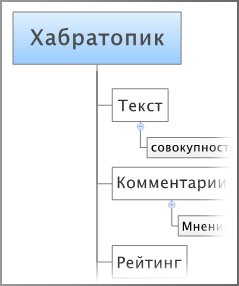Mindmaps in school
 I think most habra people should be familiar with such a thing as mind mappas, they are mind maps, they are communication diagrams. For those who are not in the know, I will explain: a mind map is a hierarchical diagram representing a multitude of interconnected thoughts.
I think most habra people should be familiar with such a thing as mind mappas, they are mind maps, they are communication diagrams. For those who are not in the know, I will explain: a mind map is a hierarchical diagram representing a multitude of interconnected thoughts.Link diagrams have many possible uses. For example, you can use them to develop databases and abstract class structures, brainstorm, or plan for personal expenses. I'll tell you how I use them in school.
How I use mindmaps
The method of application is quite simple: the outlined material in a convenient form for your perception is recorded in the map. I prefer to first identify the basic concepts of the subject, and then decipher each of them. Moving from the general to the particular, I create an ever deeper structure.
It should be noted that I study to be a lawyer, so examples will be relevant.
For example, today I was preparing for an exam on environmental law. Having created the topic “Environmental Law”, I defined the main concepts subordinate to it:
- industry legislation
- terms of environmental law
- industry principles
- ...
Then I deciphered each of these concepts, specifying their features and grouping them accordingly. The result was such a map .
Now about how to learn the material using a memory card.
- Collapse all nodes, leaving only the first level.
- We look at the first concept that we want to learn, and from memory we list what it contains.
- Expand the node and check ourselves.
- We do the same with each following concept. Repeat until the error rate drops to a more or less acceptable level.
In this way, you can learn and memorize virtually any information that can be logically structured.
Editing Tools
There are a lot of tools for editing and viewing link diagrams. I prefer the free version of XMind , and I use 42ind42.com to publish maps. In principle, any software that is fully controlled from the keyboard and allows you to collapse individual branches of the card will do.
A useful feature of XMind is that it allows you to easily switch map presentation modes. For example, the Tree mode (in the illustration) is very convenient for taking notes.
Some more examples
- My summary on administrative responsibility
- Abstract on automation and design of control systems - the authorship of my friend.
')
Source: https://habr.com/ru/post/61254/
All Articles